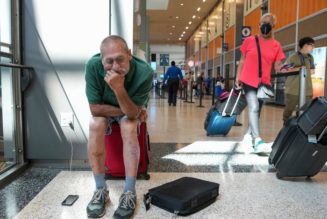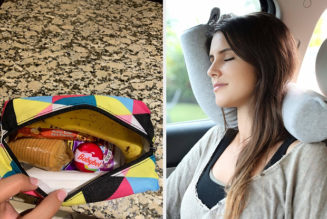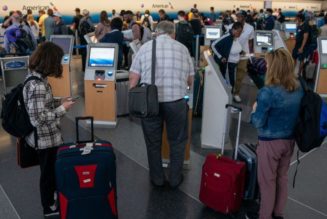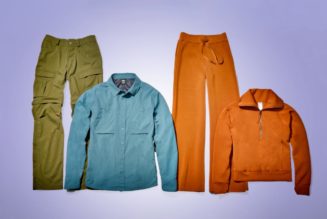
Listening to something on your personal device makes many of life’s dull moments more palatable. Waiting in line at airport security? Easy when you can watch YouTube gardening tutorials Twelve-hour flight? Piece of cake with the entirety of “Suits” downloaded to your laptop.
But since the Sony Walkman put headphones on the map in 1979, the technology has both been hailed as a modern marvel and criticized as an antisocial danger. Whichever way you see it, judging by the way some people use (or don’t use) headphones in public, it seems we need to set some ground rules — particularly for airports and on planes, when we’re surrounded by countless other humans.
So, when should air travelers wear headphones or take them out? We called etiquette and travel experts to weigh in.
Stay in touch with reality at the airport
Headphones are a godsend for tuning out mess, and airports have plenty: strangers yapping, babies crying, construction blaring, everybody coughing. But completely detaching yourself from airport noise can backfire.
“There’s a potential to miss critical information that can really affect the way your travel day goes,” said Jonnie Lane, who’s been a Delta Air Lines flight attendant for 16 years.
You may miss hearing your name called over the loudspeaker, announcements for gate changes or even emergencies. Being totally checked out could hold up boarding or takeoff and create more work for airline employees, “so we try to tell people to be mindful of when they’re using their headphones,” Lane said.
Remove headphones when you’re face-to-face with another person
When you meet a gate agent, Starbucks cashier or flight attendant, it’s bare-minimum Etiquette 101 to give that person your attention, said Nick Leighton, an Emmy-winning talk-show host and co-host of the podcast “Were You Raised By Wolves?” The cardinal sin of headphone use is not disengaging with them when another person is trying to communicate with you.
“I think it’s important to be aware of the energy you’re sending out toward other people,” said David Coggins, author of the New York Times bestseller “Men and Manners.” Using headphones “contains us into our own noise-cancellation utopia, but it allows us to ignore other people,” he said. “We still want to engage and connect.”
So when you approach someone, or vice versa, it’s “headphones out, not on my phone, sunglasses off,” Leighton said. That’s when you’re handing over your ID to a TSA agent, scanning your boarding pass, greeting the flight attendant who’s greeting you or acknowledging the existence of your row-mates.
“When someone sits next to me on an airplane, I look at them and smile and say hello to greet them,” Coggins said. “But then I look back away. None of the dreaded worst thing on earth: ‘So, where’s home?’”
Just being no-headphones nice acknowledges that you’ll be crammed within proximity to each other, often for hours, “and that I would rather start off on the right foot,” Coggins said.
One bud out is a reasonable compromise
If you’re working with big over-the-ear, noise-canceling headphones, it’s best to remove them or rest them around your neck when engaging with someone. For ear bud-style headphones, Coggins said, removing just one bud sends a message that you’re being courteous.
“When I get to the front of the line, I usually take one ear out so they know that I’m focused on them, and I say thank you,” he said.
Removing one bud is “enough of an effort to show that, hey, I’m going to pay attention and engage,” said Lane, who often does the same on her personal travels. “Removing both would be great, but, you know, removing one is okay. That’s acceptable.”
Keep phone calls and videos to yourself
What’s never acceptable is to allow any sound to project from your phone. Headphone use is essential if you’re going to be taking a phone or FaceTime call, watching videos, playing noisy cellphone games or listening to voice notes from your gossipy best friend.
While wearing your headphones at an ill-advised time may be rude to a few people you ignore, blaring a Zoom meeting to your neighbors is “a crime against everybody,” Coggins said.
The recent uptick in public speakerphone calls is particularly obnoxious. “A lot of people love to talk on their phone as if it’s a walkie-talkie,” Coggins said.
Do everybody a favor and put your phone to your ear the old-fashioned way, or plug in those headphones.
Don’t tune out the safety briefing
Even if you’ve heard the spiel a thousand times, if a flight attendant is standing in the aisle giving a safety demonstration before takeoff, you should listen to them.
“That is a courtesy, and also just for safety,” Leighton said. “It would be nice that everybody did pay attention, because every aircraft is a little different. Getting off an airplane in 90 seconds or less does actually require team effort.”
Your flight crew will appreciate the gesture.
“It does take a toll throughout the day when I have to do that multiple times and I get ignored several times,” Lane said. “It’s frustrating because I’m there primarily for their safety.”
While flight attendants are in charge of helping you in case of emergency, airlines’ safety briefings are designed to help you help yourself.
Plus, “you don’t want to be in a situation where you’ve completely ignored them — you don’t even make eye contact with them — and then, heaven forbid, you need something while on flight,” said Jules Hirst, an etiquette expert and co-author of the book “Power of Civility.”
Be mindful of exceptions
There is, of course, nuance to these rules. For example, autistic travelers may use headphones to avoid sensory triggers, and keeping them on at all times may be helpful when navigating loud, crowded places like airports and airplanes.
Don’t publicly shame someone for the behavior; you never know the full story.









